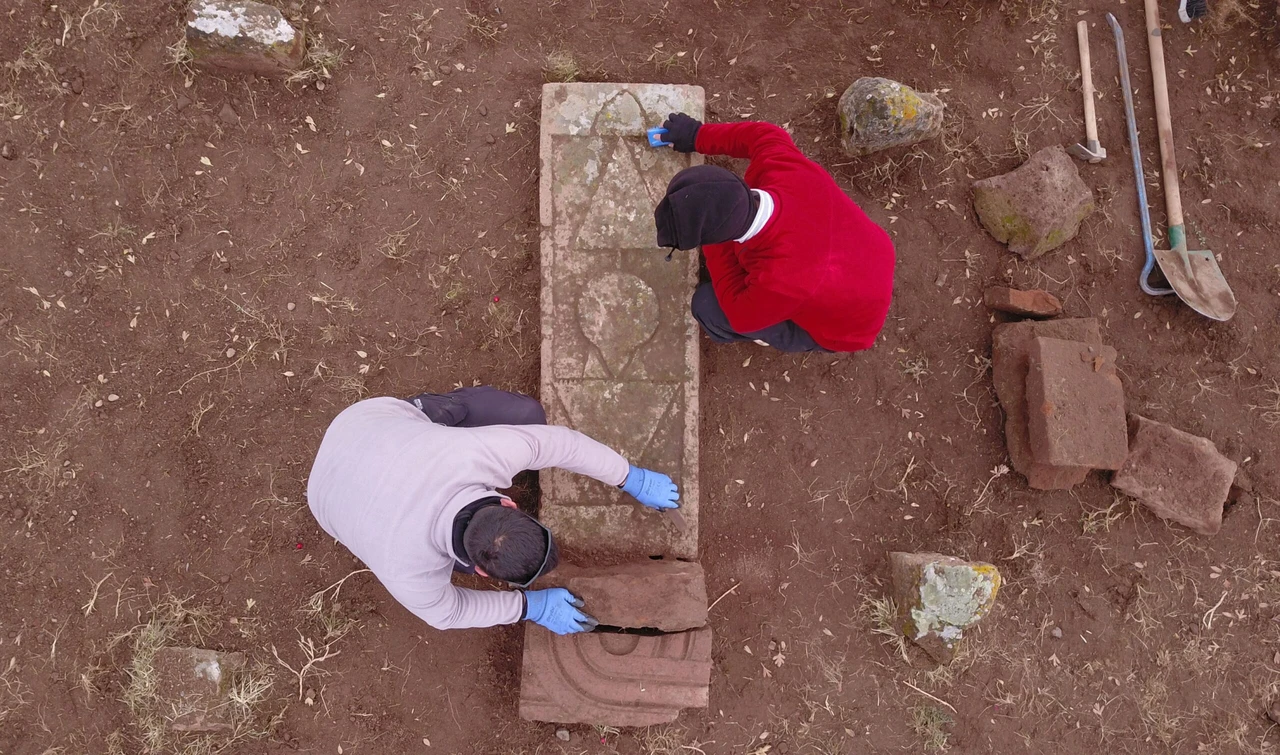Ancient Urartian storage jars reveal insights into Van’s agricultural heritage
 In archaeological excavations at the fortress remains at the foot of Erek Mountain in Van's Ipekyolu district, cuneiform-inscribed pithoi (storage jars) used for storing oil, wine, and grains during the Urartian period have been unearthed, Türkiye, November 7, 2024. (AA Photo)
In archaeological excavations at the fortress remains at the foot of Erek Mountain in Van's Ipekyolu district, cuneiform-inscribed pithoi (storage jars) used for storing oil, wine, and grains during the Urartian period have been unearthed, Türkiye, November 7, 2024. (AA Photo)
Archaeologists uncovered 42 inscribed pithoi, large ancient storage jars, during excavations at an Urartian-era fortress in Van’s Ipekyolu district.
These pithoi, etched with cuneiform inscriptions, were used to store vital supplies such as oil, grains and beverages. The find offers new insights into the agricultural practices and daily life of the Urartian civilization, believed to have flourished in the region over 2,700 years ago.
The excavation is led by Rifat Kuvanc, associate professor at Igdir University’s Art History Department, under the supervision of Van Museum and with permission from the Ministry of Culture and Tourism.
Focused on the southeastern section of the fortress remains at the foot of Erek Mountain, the dig involves a team of 10 archaeologists, art historians, and conservators who are delving into Van’s rich ancient past.
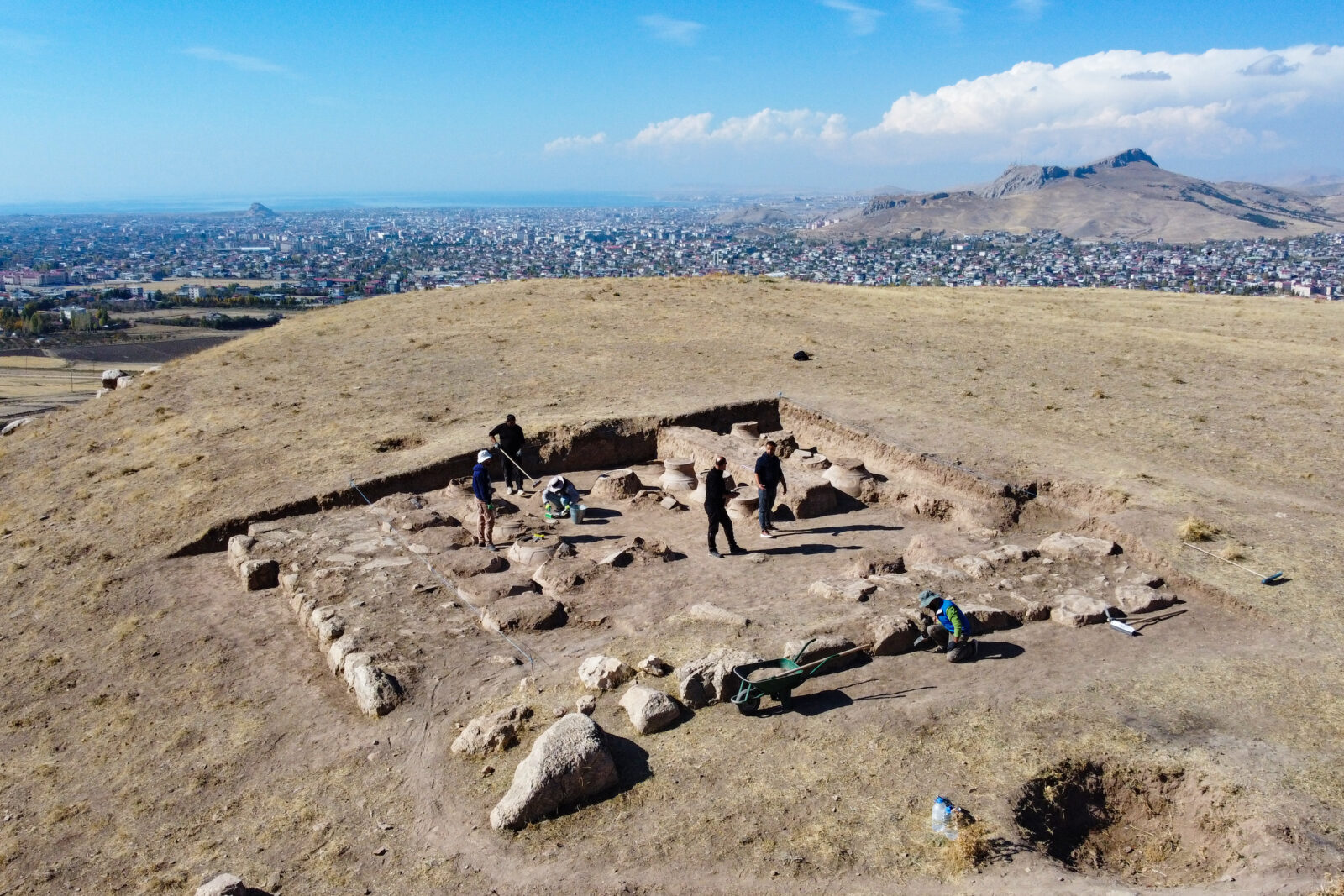
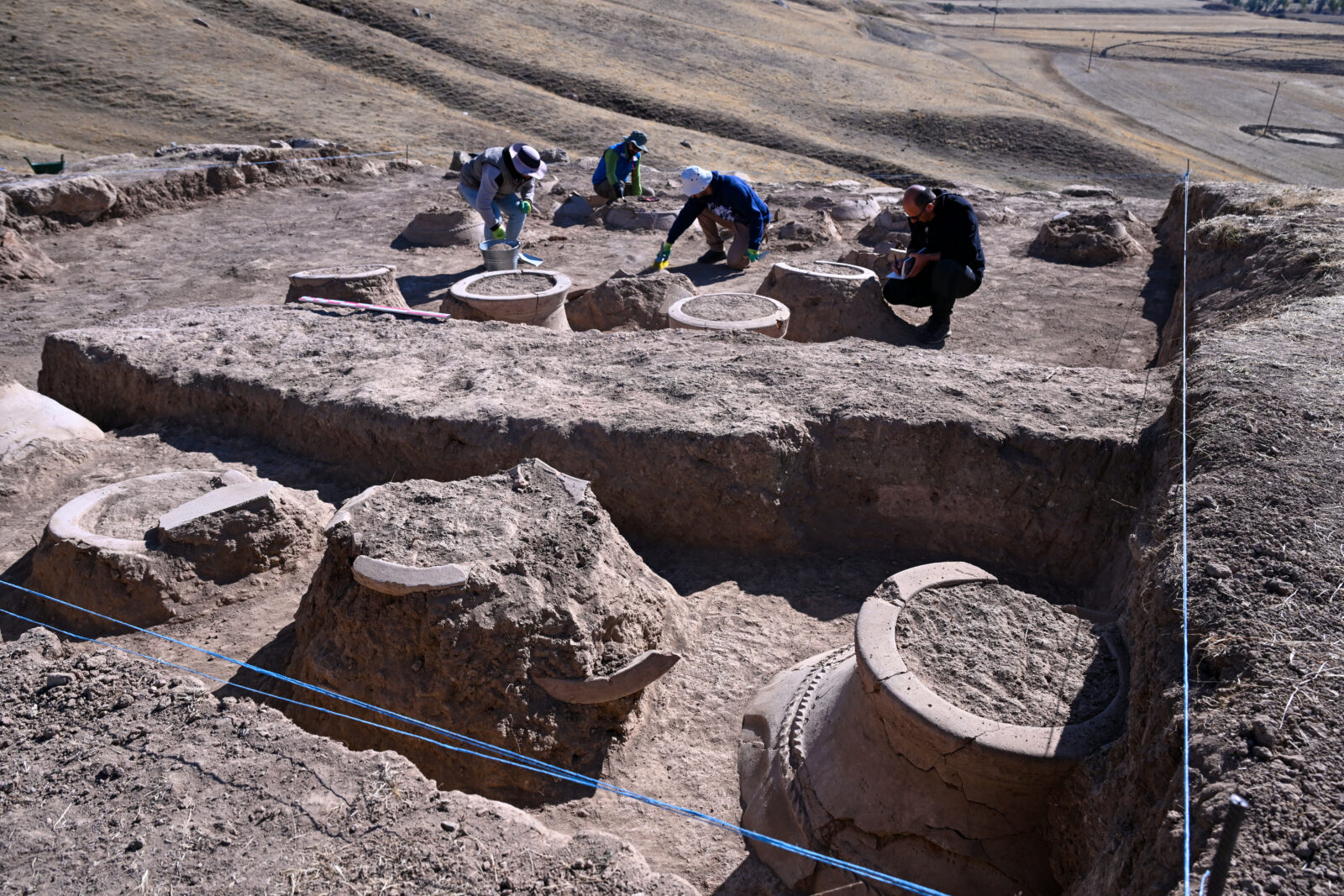
‘An unprecedented Urartian storage facility’
Kuvanc shared his excitement about the findings, describing the fortress site as a strategic vantage point overlooking Van and its surrounding plains. “This is the first time we have found such a large-scale storage area at a site that commands a view over Van and the plains,” Kuvanc explained. “Although we’ve encountered other Urartian storage locations, this discovery marks the first of its kind on this scale in such a prominent position.”
The team discovered inscriptions on the pithoi indicating they were used to measure and store essential items. “The cuneiform inscriptions help us understand the types and quantities of products stored,” Kuvanc added. “It appears sesame oil and wine were particularly important items here, stored in these massive jars.”
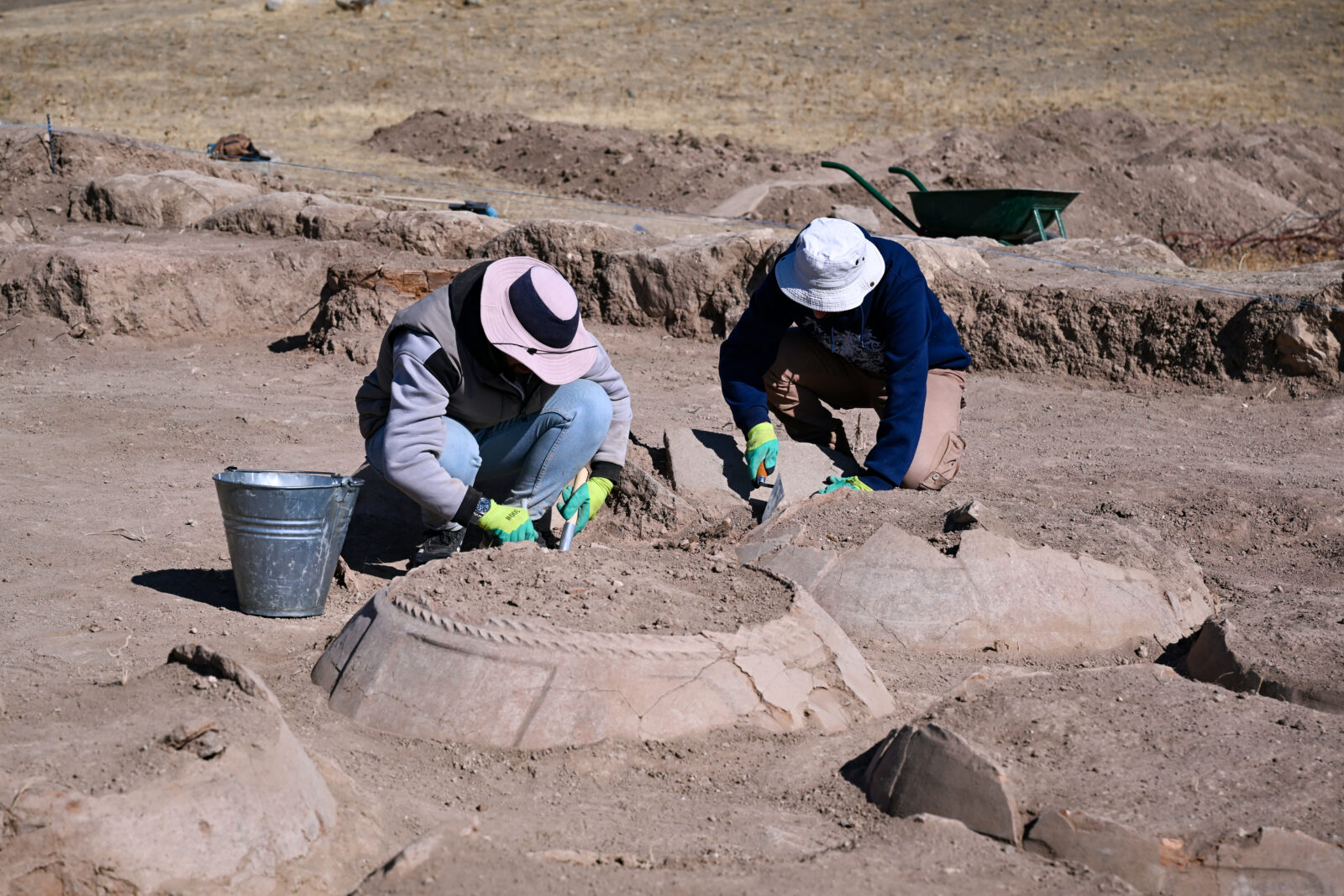
Storage jars hint at agriculture’s significance to Urartians
According to inscriptions in the area, the fortress was built by Urartian King Menua, a ruler known for advancing agricultural infrastructure in the region. Kuvanc emphasized the Urartians‘ reliance on farming: “The pithoi contain various signs that provide information about the preserved items. These jars were essential for storing sesame oil and wine, two critical resources. The inscriptions even specify measurement units, enabling us to gauge the amount of each stored product.”
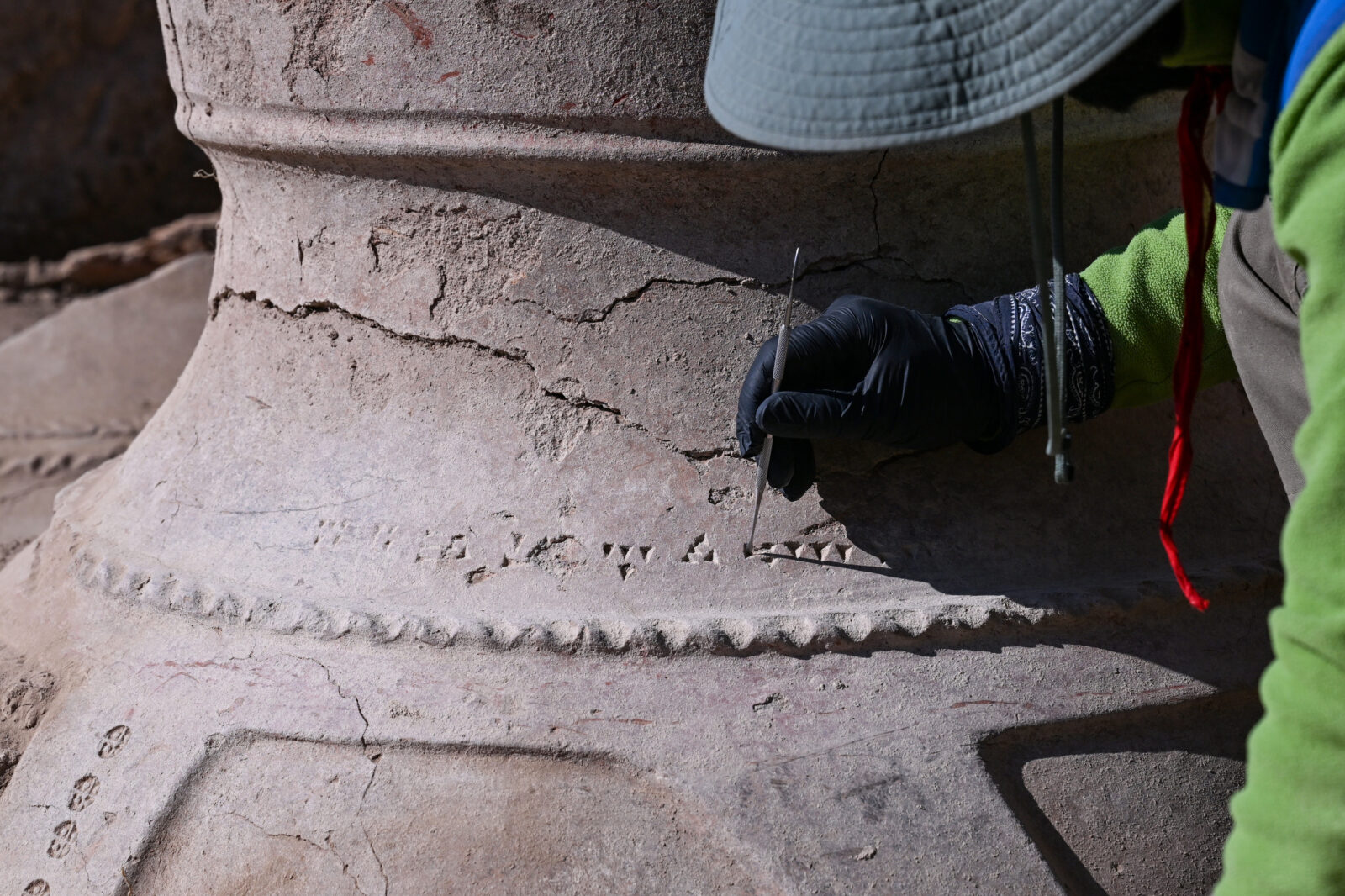
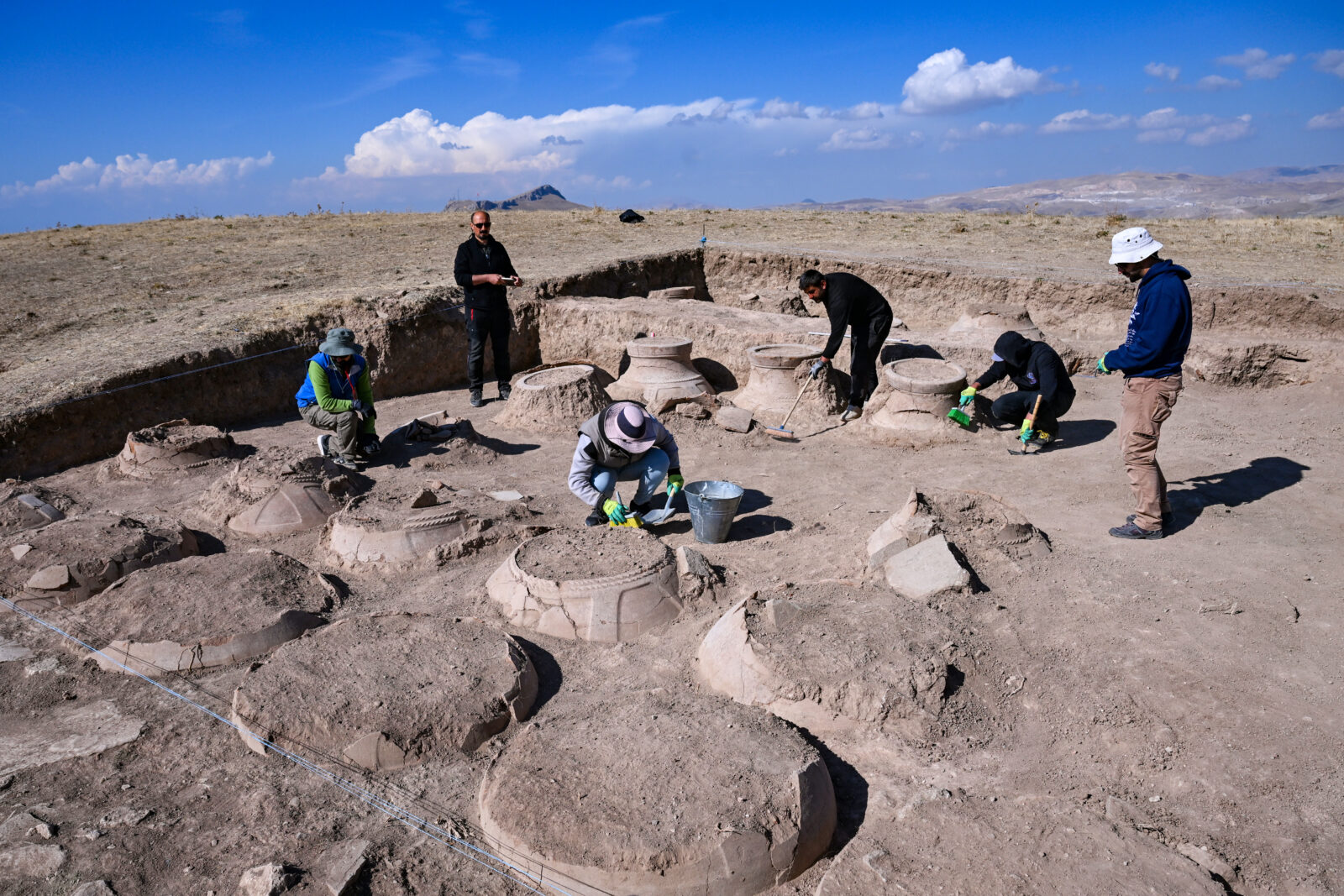
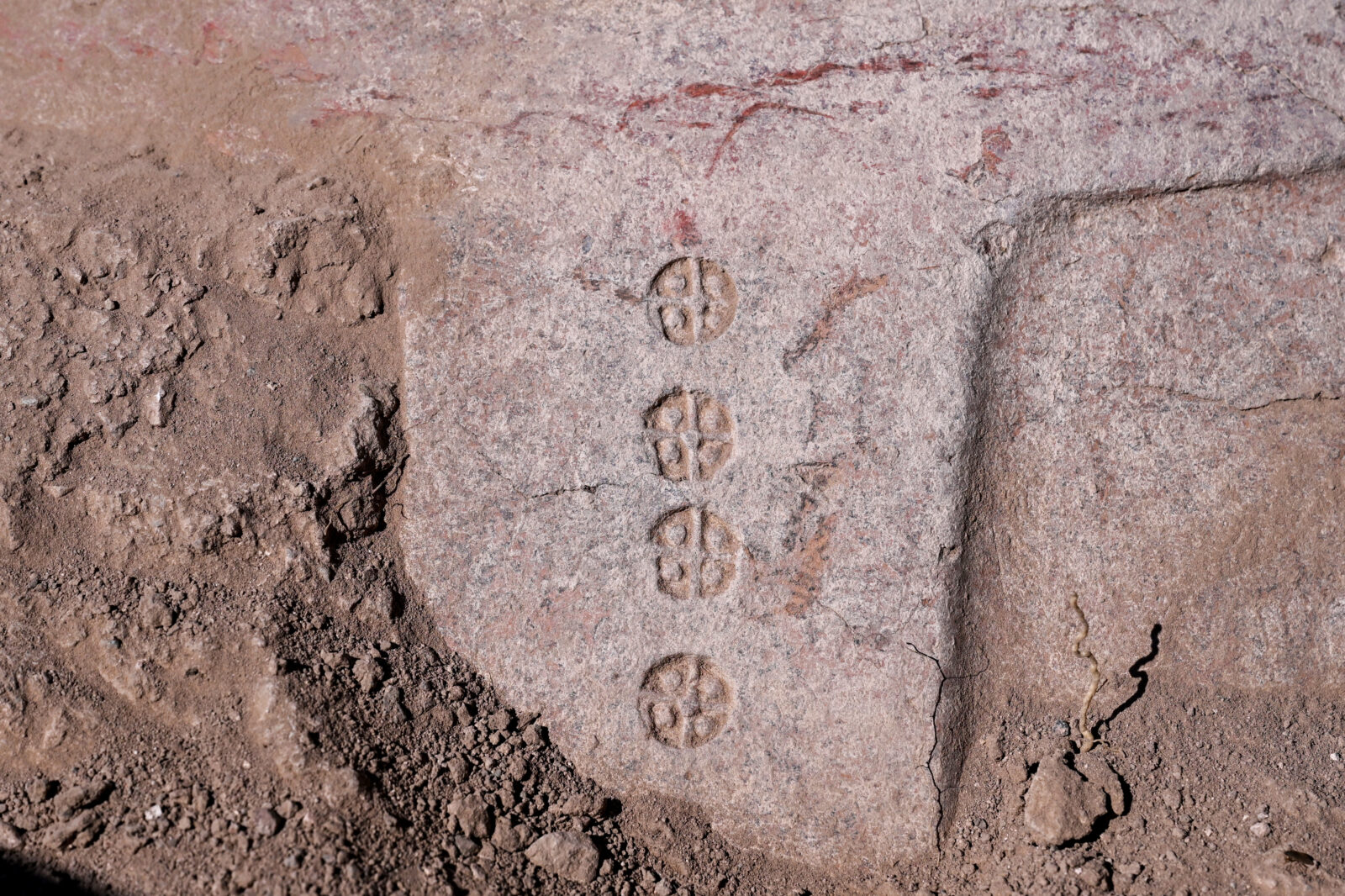
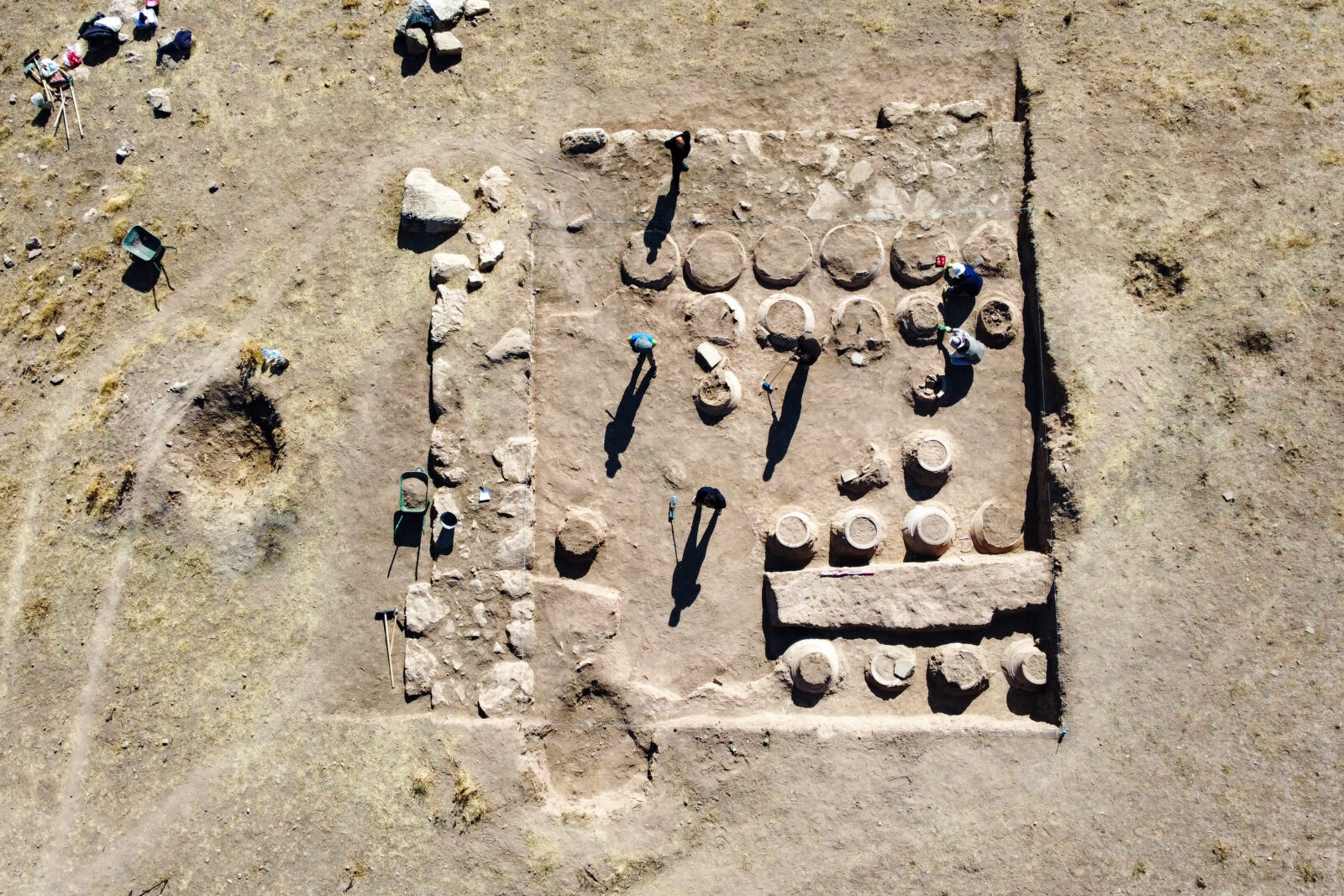
Kuvanc described the site as a significant center for agricultural storage in the Van Plain, highlighting its potential to reveal more about Urartian storage techniques and food preservation methods. Future excavations aim to explore other architectural structures within the fortress area to expand on this year’s findings.
As work continues, Kuvanc and his team hope to unlock further secrets of the Urartian civilization, adding to our understanding of ancient agricultural societies in Türkiye.
